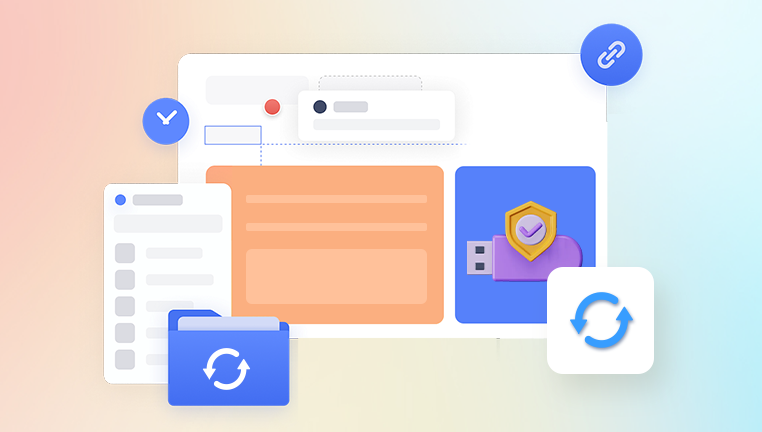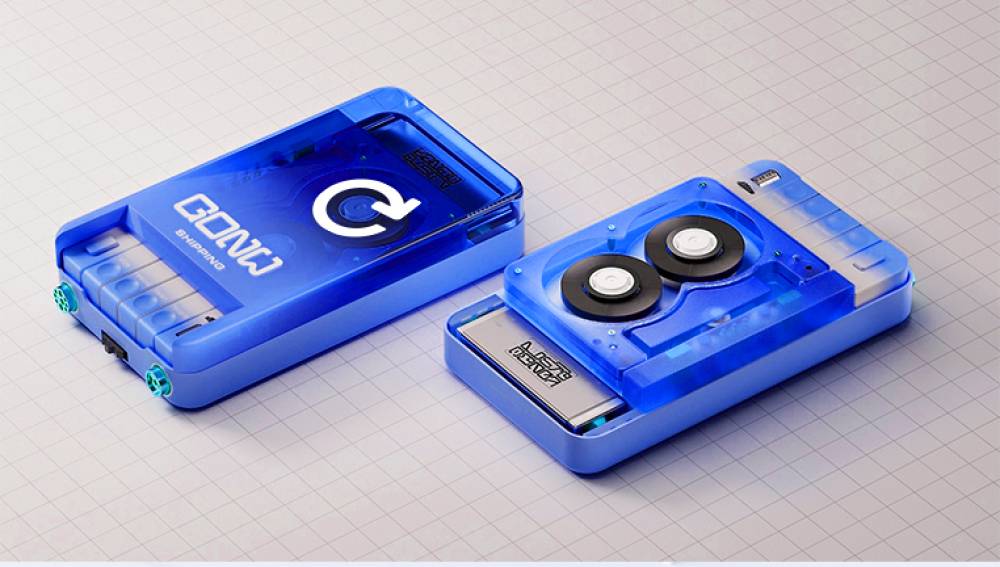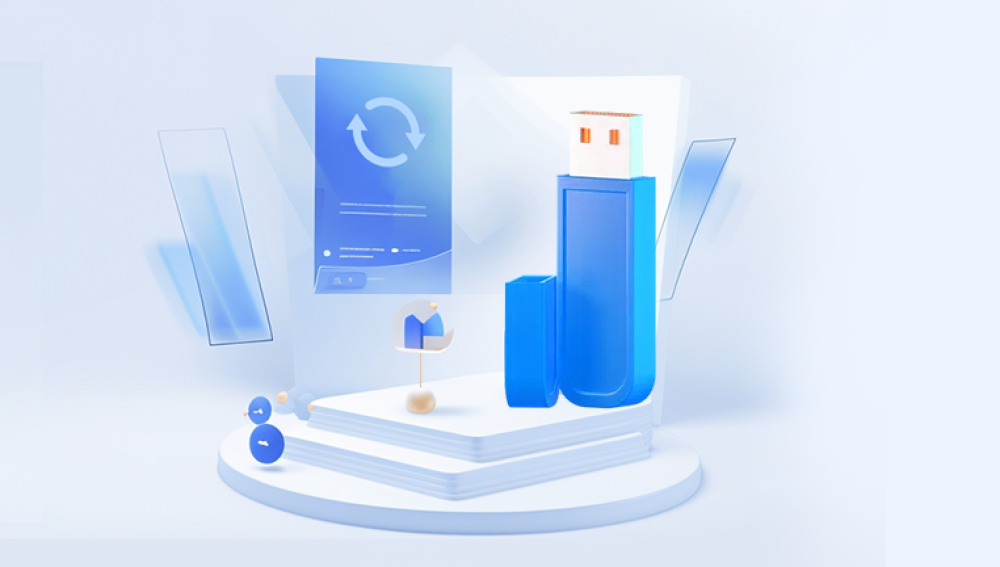USB flash drives are popular for their convenience, portability, and ease of use. They’re perfect for storing everything from work documents and school assignments to personal photos and videos. However, like all storage devices, USB flash drives are not immune to corruption. One moment you might be transferring files, and the next, you find that your data is inaccessible or the files appear damaged. If you're facing this situation, don't panic corrupted files can often be recovered using the right tools and methods.
Common Causes of USB Flash Drive Corruption:
Improper Ejection
Removing the flash drive without using the "Safely Remove Hardware" option can interrupt file writing processes and damage the file system.
Virus or Malware Attacks
Infected USB drives can have files altered, hidden, or deleted by malicious software.

Physical Damage
Dropping or exposing a USB drive to moisture or extreme temperatures can damage internal components.
Power Surges or Interruptions
Power failure during data transfer can lead to incomplete writes and corrupt files.
File System Errors
Errors in the file system (FAT32. exFAT, NTFS) may prevent files from being accessed properly.
Bad Sectors or NAND Wear
Over time, flash memory wears out, leading to unreadable or damaged areas.
Signs of a Corrupted USB Flash Drive
Identifying the symptoms early can help you choose the right method to recover your files:
The USB drive shows an error message like “Drive is not accessible.”
Files appear as gibberish or with strange symbols.
You receive a prompt to format the USB drive when you plug it in.
Some or all files are missing or won't open.
File extensions are changed.
The file size is listed as zero bytes.
The drive shows as RAW instead of FAT32/exFAT/NTFS.
Immediate Steps Before Recovery
When dealing with corrupted USB drives, it's important to act carefully:
Stop Using the Drive Immediately
Avoid copying new files to the drive. Writing new data could overwrite lost files, making recovery harder.
Do Not Format
Even if prompted, do not format the drive unless it's part of a guided recovery process.
Use a Different USB Port or Computer
Sometimes, the issue is with the USB port, not the drive. Try another computer or port to confirm.
Check with Antivirus Software
Run a virus scan on the USB drive using trusted antivirus software. Some files might be hidden or altered by malware.
Method 1: Use Command Prompt (CMD) to Repair the Drive
Windows includes a built-in tool to fix file system errors using the Command Prompt.
Steps:
Connect the USB flash drive to your PC.
Press Windows + R, type cmd, and press Enter.
In the Command Prompt, type:
bash
CopyEdit
chkdsk E: /f /r /x
Replace E: with your actual USB drive letter.
/f fixes errors, /r locates bad sectors, /x dismounts the drive if needed.
What This Does:
Scans and repairs file system issues.
Attempts to recover readable data from bad sectors.
If successful, your corrupted files may become accessible again.
Method 2: Recover Hidden Files with ATTRIB Command
Malware can sometimes hide your files by changing their attributes.
Steps:
Open Command Prompt as Administrator.
Type the following command:
bash
CopyEdit
attrib -h -r -s /s /d E:\*.*
Replace E: with your USB drive letter.
What This Does:
Removes hidden, read-only, and system attributes from all files on the USB.
Makes previously hidden files visible again.
Method 3: Use Free Data Recovery Software
Drecov Data Recovery
When a USB flash drive becomes corrupted, the files stored on it may become inaccessible, unreadable, or even disappear altogether. Fortunately, Drecov Data Recovery offers a powerful and user-friendly solution to recover corrupted files from your USB flash drive quickly and for free. Whether you're dealing with file system errors, accidental formatting, or virus-related corruption, this tool can help restore your data effectively.
To begin the recovery process, download and install Drecov Data Recovery on your computer. Once installed, insert the corrupted USB flash drive into your computer’s USB port. The software will automatically detect the drive. From the main interface, select the USB drive and choose a scan mode “Quick Scan” for recently corrupted files or “Deep Scan” for more severe damage or formatting issues.
After scanning, Drecov Data Recovery will display all recoverable files, neatly organized by file type. You can preview these files to confirm their integrity before selecting the ones you want to recover. Once selected, save them to a secure location on your computer, not the USB flash drive, to avoid overwriting remaining data.
Method 4: Restore Previous Versions (Windows Only)
Windows sometimes creates restore points or backup versions.
Steps:
Right-click on your USB drive in File Explorer.
Select Properties > Previous Versions.
If available, select a version and click Restore.
This works only if System Protection is enabled and restore points exist.
Method 5: Use Windows File Recovery Tool (Command Line)
Windows File Recovery is a free tool from Microsoft for advanced users.
Steps:
Install from Microsoft Store.
Open Command Prompt as Administrator.
Type:
mathematica
CopyEdit
winfr E: C:\RecoveredFiles /extensive
Replace E: with your USB drive and C:\RecoveredFiles with your desired destination folder.
This tool scans for deleted and corrupted files by signature matching.
Method 6: Repair USB Drive Using Disk Management
If your drive appears but can’t be opened, you might need to assign it a drive letter.
Steps:
Press Windows + X and choose Disk Management.
Locate your USB drive.
If it lacks a letter, right-click > Change Drive Letter and Paths > Add.
Assign a new letter and check if it becomes accessible.
Be careful not to format the drive unless using recovery tools to retrieve files afterward.
Method 7: Try a Linux Live USB for Recovery
Linux systems are often better at reading damaged USB drives than Windows.
Steps:
Create a bootable Linux USB (e.g., Ubuntu).
Boot into Linux.
Insert the corrupted USB drive.
Open the file manager—Linux may read the files even if Windows couldn’t.
Copy files to another storage device.
This method is especially helpful when the file system appears as RAW or inaccessible on Windows.
Prevention Tips: Avoid Future USB Corruption
To reduce the risk of future corruption, follow these best practices:
Always Eject Properly
Use “Safely Remove Hardware” before unplugging.
Avoid Sudden Power Loss
Never remove the USB while transferring files or during shutdown.
Scan Regularly for Viruses
Install a trusted antivirus to detect and remove USB-based malware.
Back Up Your Data Frequently
Store important data in multiple locations, such as cloud storage or external drives.
Limit Write Cycles
Avoid frequent rewriting of large files on the same USB drive to extend its lifespan.
Use Quality USB Drives
Cheaper drives tend to fail more quickly. Choose reputable brands with good reviews.
When to Seek Professional Help
If all else fails and your data is irreplaceable, consider consulting a professional data recovery service. These services use advanced techniques to recover data from severely corrupted or physically damaged drives. While they can be costly, many offer a "no recovery, no charge" policy and free diagnostics.
Corrupted USB flash drives can cause panic, but recovery is often within reach. Whether your files have been hidden by malware, lost due to improper ejection, or corrupted by a failing file system, you have multiple free methods available. From using CMD commands like CHKDSK and ATTRIB to specialized recovery tools like Recuva, PhotoRec, and Windows File Recovery, you can retrieve your important files without professional help in many cases.
The key is to act quickly and avoid further damage to the USB drive. Stop using it immediately, avoid formatting unless guided by a recovery tool, and try different recovery methods systematically. If you find that the files are beyond reach, professional recovery services offer one final option, especially for physically damaged drives.




